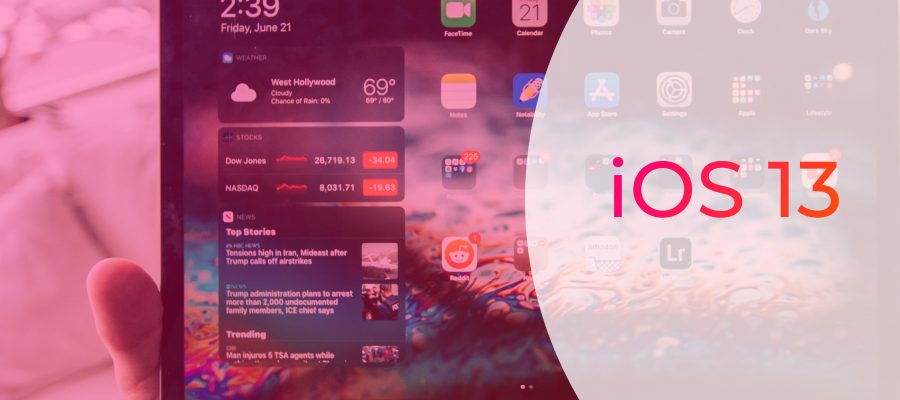iOS 13 is the thirteenth major release of the iOS mobile operating system developed by Apple Inc. The successor to iOS 12, it was announced at the company’s Worldwide Developers Conference on June 3, 2019, and was released on September 19, 2019.
iOS 13 and iPadOS 13 were introduced by software engineering director Craig Federighi at the Apple Worldwide Developers Conference keynote address on June 3, 2019. The first beta was made available to registered developers after the keynote. The second beta was released to registered developers on June 18, 2019, and the first public beta was released on June 24, 2019.
iOS 13 changes the handling of location data. When an app requests access to location, the user chooses whether to grant access whenever they are using the app, or only once. The user will receive similar prompts for background location access, and when an app requests access to Bluetooth or Wi-Fi.
In August 2019, it was reported that beginning in April 2020, the PushKit API for VoIP will be restricted to internet telephone usage, closing a “loophole” that had been used by other apps for background data collection.
A system-wide dark mode allows users to enable a light-on-dark color scheme for the entire iOS and iPadOS user interface, all native applications, and supported third-party apps. It can be manually turned on or set to automatically switch between light and dark modes based on the time of day.
iOS 13 introduces an updated volume indicator that appears on the left side of the screen and allows the user to set the volume by sliding a finger on the indicator. Previous versions have the indicator in the center of the screen.
Siri uses a software-generated voice called “Neural TTS”, intended to sound more natural than previous versions that use clips of human voices. Siri will also become more functional and new sound control will be available. The Siri Shortcuts app is now installed by default. Siri will also use HomePods to learn and recognize voices of different people. It will also be possible for Siri to automatically read incoming messages aloud on AirPods.
The QuickType virtual keyboard now features QuickPath, allowing the user to swipe their finger across the keyboard to complete words and phrases. This functionality was previously exclusively available via third-party keyboard applications such as SwiftKey, Adaptxt, or Gboard. Emoji stickers have been included on the emoji keyboard and can be used wherever regular emoji can be.
iOS 13 and iPadOS 13 add a new system-wide gesture interface for cut, copy, paste, undo, and redo. A three-finger swipe left or up will undo; three fingers right or down will redo. A single three-finger pinch will copy, a second three-finger pinch will cut, and a three-finger spread pastes. A three-finger single tap will bring up a shortcut menu with all five options.
The blue text cursor can now be moved around text fields by pressing and holding to pick it up and move it. Many new options for text selection have also been added: double-tapping a word will select it, triple-tapping selects a sentence, and quadruple-tapping a paragraph selects it.
iOS 13 makes several performance improvements. Face ID unlocks the iPhone X, XS / XS Max, and iPhone XR up to 30 percent faster than on iOS 12. A new file format makes app downloads as much as 50 percent smaller, app updates as much as 60 percent smaller, and app launches up to twice as fast.
The version of iOS for iPad devices was renamed iPadOS, reflecting the different functionalities of iPhones, iPods touch, and iPads.
iOS 13 adds official support for the Sony DualShock 4 and the Microsoft Xbox One controller. iOS 13 also adds support for wireless audio sharing for AirPods and certain Beats headphones.
A new multi-select gesture is available in supported applications such as Files and Mail. Multiple items, such as files or emails, can be quickly selected by dragging two fingers over the desired items.
The above is a brief about iOS 13. Watch this space for more updates on the latest trends in Technology.
